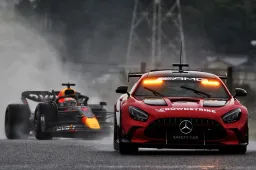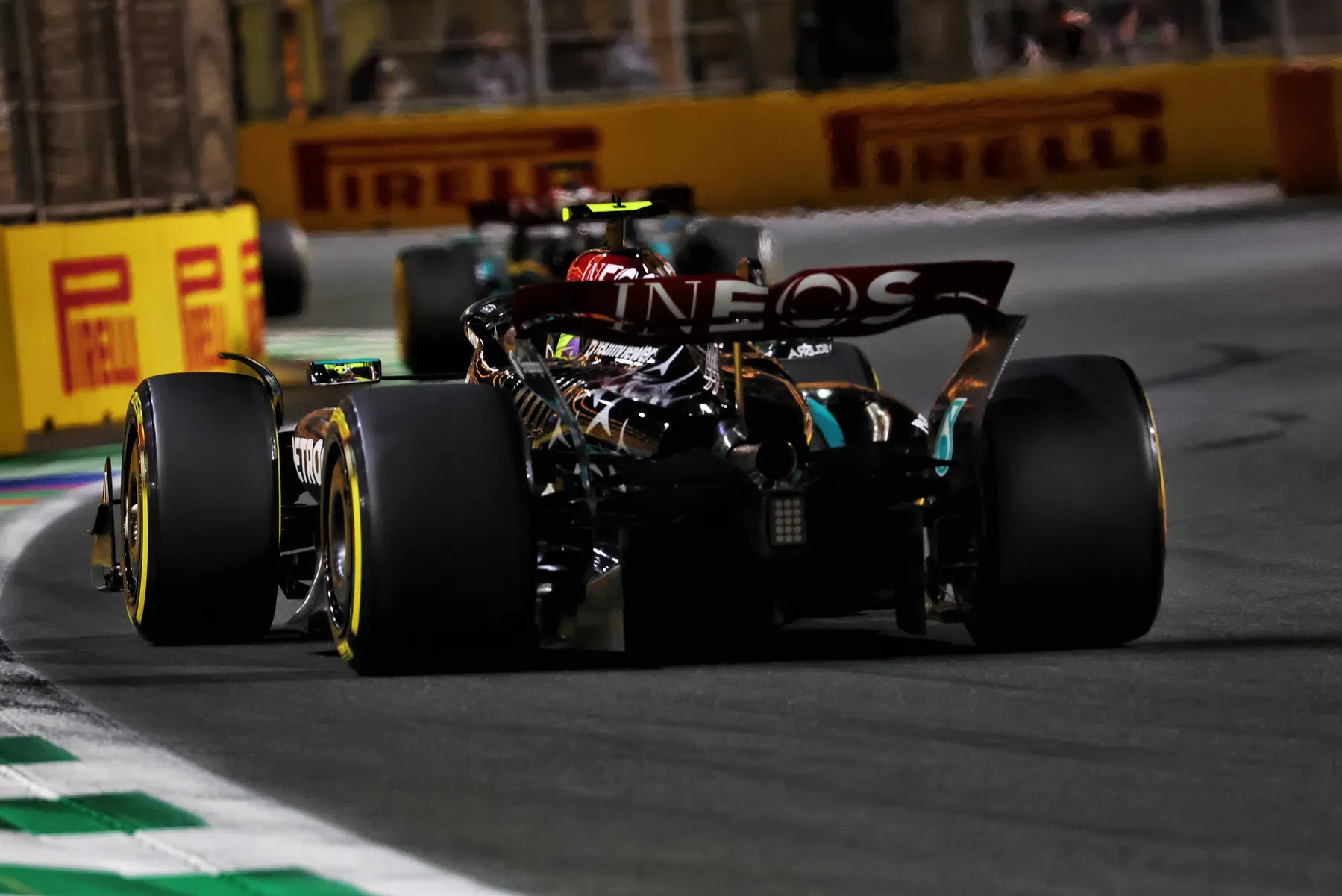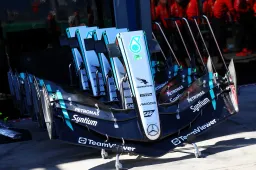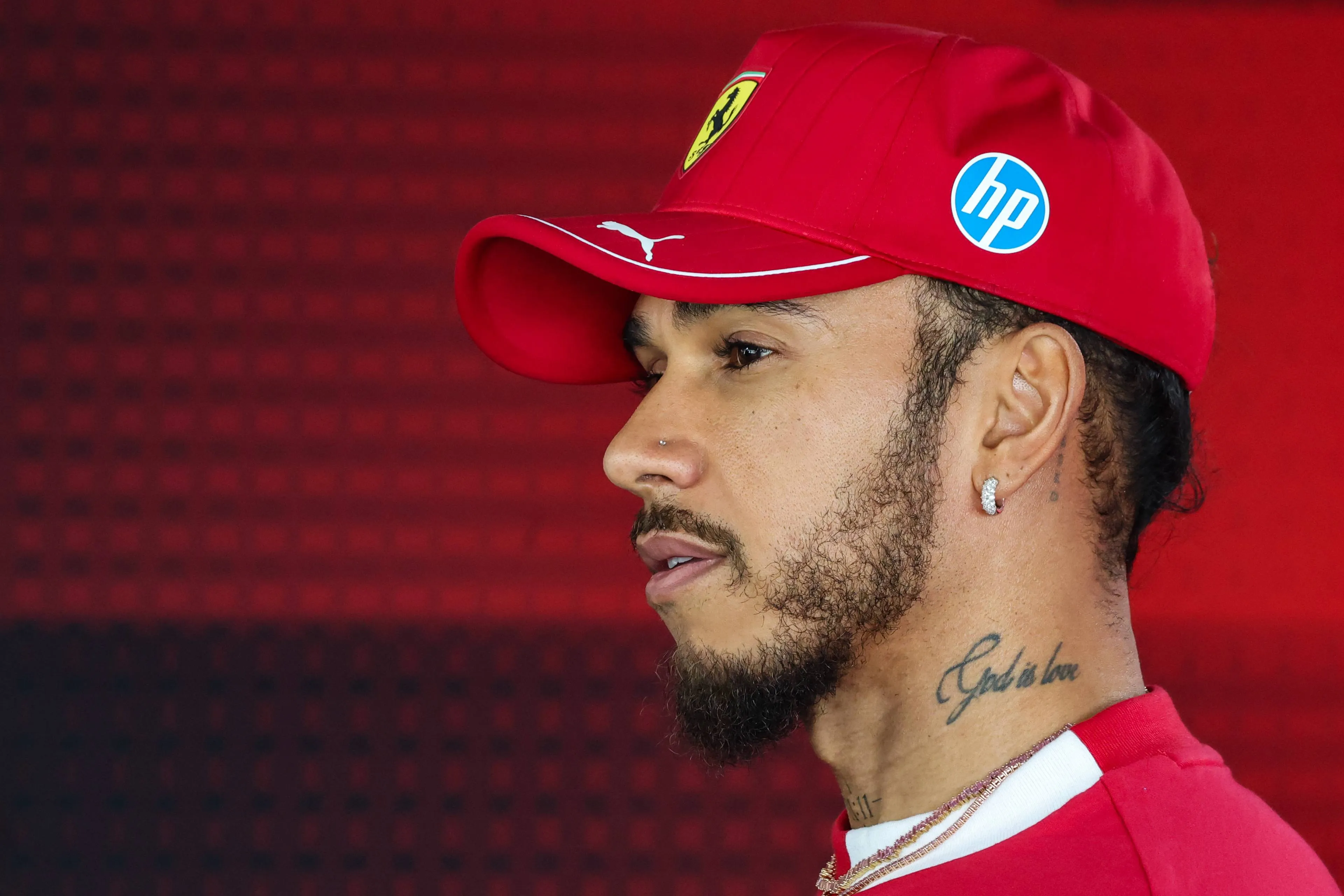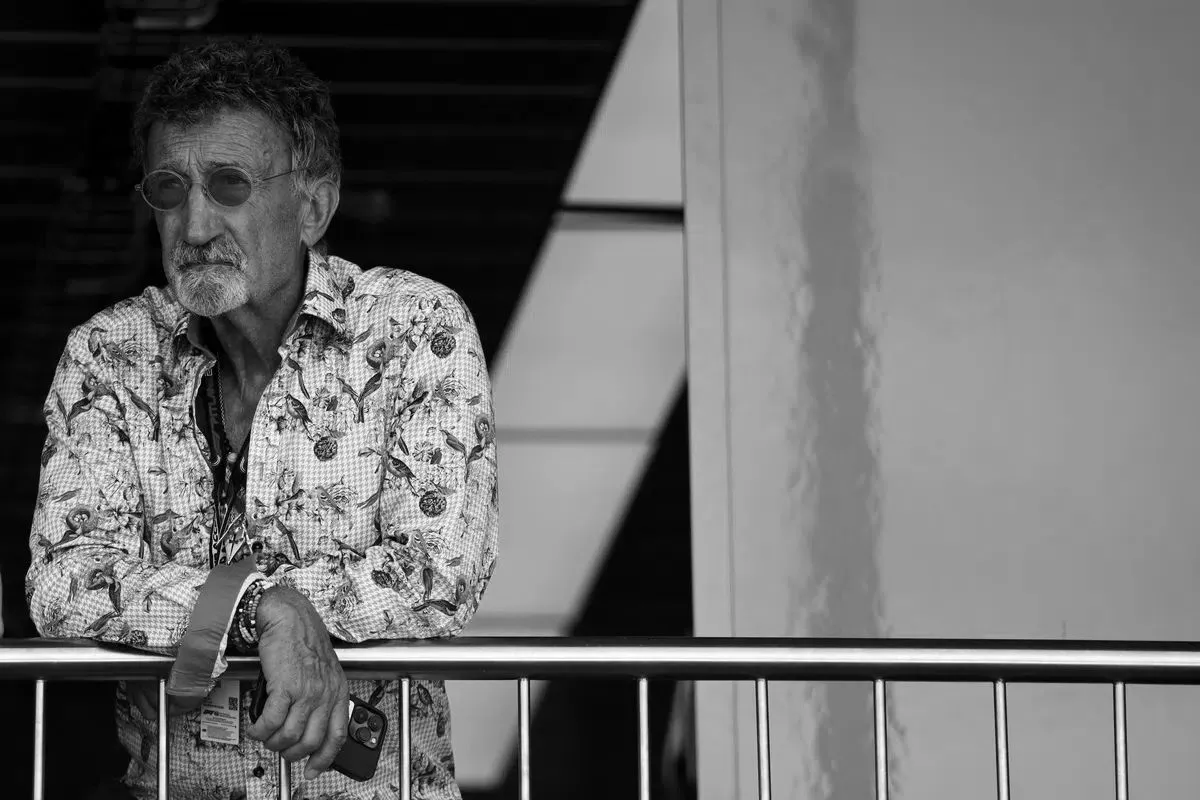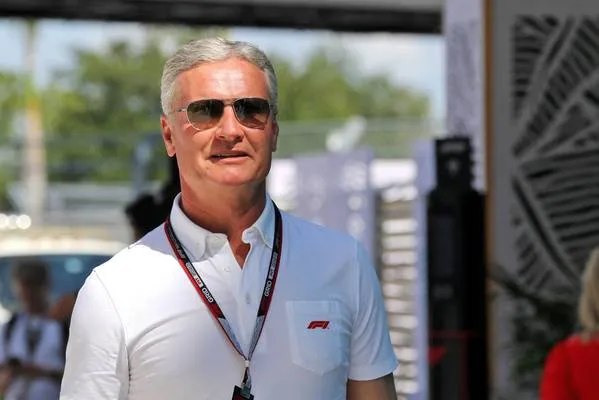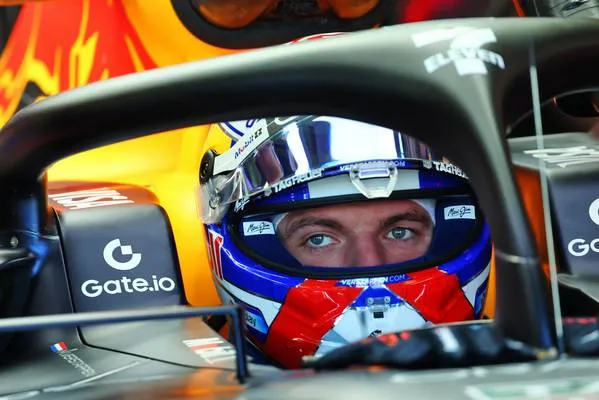After the first two rounds in Middle East, F1 moves to the other side of the globe on the historical Albert Park Circuit. This track, whose layout has been revised after Covid, offers a great variety of different corners, such as the very fast 9-10 chicane and some slow harpins in the last sector, as well as 4 DRS zones, more than any other circuit on the calendar. For all these reasons, it’s quite difficult to find the right balance around this track, as the car must be well balanced in all types of corners, while still having a very high top speed, to make overtaking possible.
The obvious choice would be a medium-downforce set-up, but why did Mercedes adopt a medium-low-downforce rear wing in Melbourne?
Big problems since testing
Since the first day of testing, Mercedes knew that the W15 would not have allowed them to fight for the championship, but what they saw on track was probably even worse than expectated. The newly born car kept suffering from the “harmful” rear instability already seen during the 2023 season and proved to have a very tiny operating window, which meant that every little change to the set-up made the W15 extremely unbalanced.
These problems mainly concern the car's rear, so is this an aerodynamic problem or a mechanical problem? The answer is probably more complex than this, but it’s more a combination of different factors. The first two races showed that the W15 needs to run at a very low ride height to generate downforce from the Venturi channels, but if the suspension system is too stiff and the car is too low on the rear axle, a severe bouncing effect starts to affect the car. This phenomenon makes the rear very loose in all high-speed sections, hurting the rear tyres and becoming underivable for the drivers. The problem is that, as happened in Saudi, if the team rise the car to reduce the porpoising effect and adopt a higher downforce set-up to compensate for the loss of downforce (due to the higher ride height), the W15 becomes extremely slow on the straights, losing 8-10 kph compared to Ferrari and Red Bull.

The problem is that neither the technical team have found a solution to this disastrous situation yet, which means that they’ll make some experiments in Australia to try to understand where the problems of this car lay and why the simulations and data provide a behaviour of the car that’s different to reality. As confirmed by Toto Wolff himself in an interview: “We have been working hard to understand why our performance hasn't reflected our expectations. Improving that is a major focus. We hope to make some initial progress for Melbourne, and that work will guide our development in the weeks ahead.”
Why the medium-low downforce rear wing
This explanation gives a clearer image of the difficult situation at Mercedes. Also, it partially explains why the Brackley team has decided to adopt a medium-low downforce rear wing for the Australian Grand Prix. Due to the problems previously mentioned, the team has chosen this rear wing spec to better balance the car and avoid the bouncing effect problem shown in the last two races. The goal is to make the car more stable in fast-speed corners and as fast as the RB20 and the SF-24 on the straights, even though the rear instability could penalise the drivers in all slow-speed corners and under traction. The rear wing fit on both Hamilton’s and Russell’s cars is the same spec seen in Bahrain, but with a small cut on the trading edge of the DRS flap to reduce the surface and thus drag, especially when the DRS is closed.
On the other side, Red Bull and Ferrari have adopted more loaded rear wing specs, the same already used in Bahrain.
In conclusion, only practice sessions and Sunday’s race will give us a bigger picture. They will tell us if Mercedes can overcome their problems throughout the season or if they need to design a new car from scratch (once again) to compete with Red Bull and Ferrari in 2025.
Popular on GPBlog

Why 'furious' Newey may have held back Tsunoda promotion
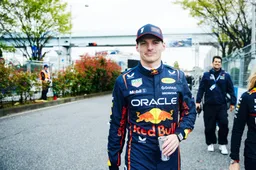
"Goodbye for now": Verstappen hints at future with Honda
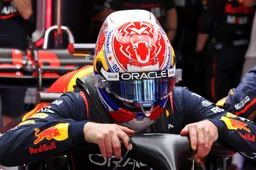
F1 Today: Verstappen's Red Bull exit hint and Newey's Tsunoda anger
